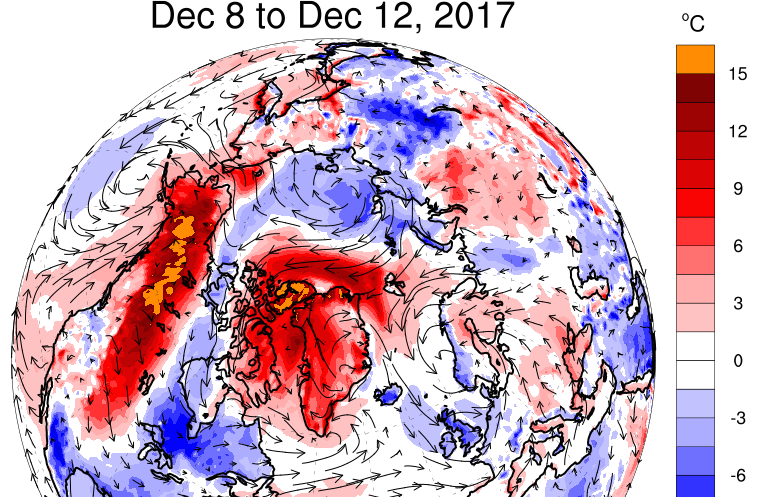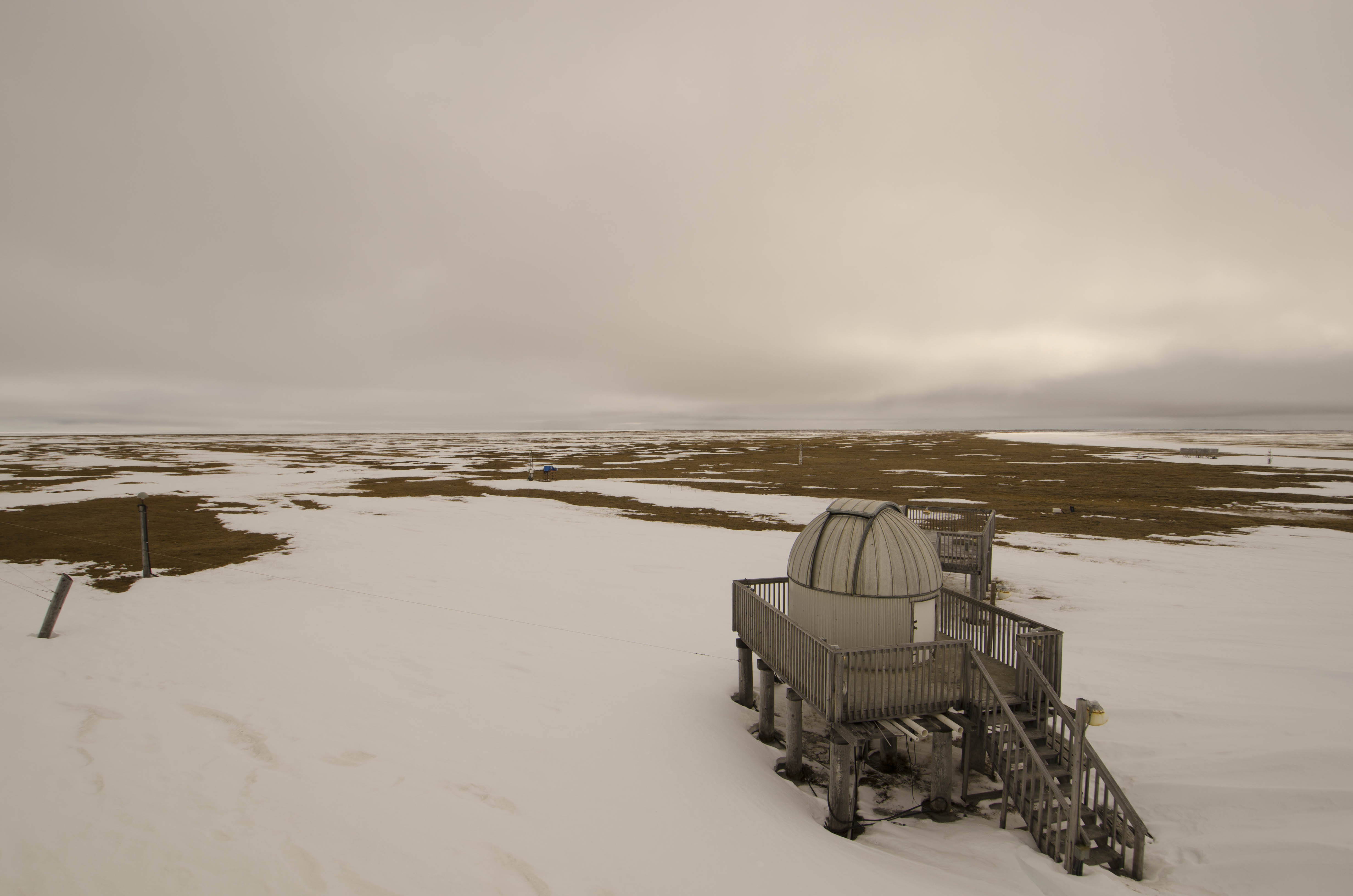In the Arctic, yesterday’s extreme is today’s ‘shifted baseline’

When scientists talk about how warm it is getting in the Arctic, the first thing to remember is that they don’t mean warm, they mean “warm” – as in what most people would consider “really cold,” but still well above what temperatures should be at a given time of year.
“It doesn’t mean that there is no cold winter air in the Arctic anymore,” says Martin Stendel, a climate scientist with the DMI, the Danish weather service.
Another thing to keep in mind is that even scientists like Stendel, who coined the term “Arctic heatwave” to describe the sudden heat events that can see temperatures rise five, 10 or even 15 degrees Celsius above normal, can become overwhelmed by what is happening.
Once rare, extreme heat events in the Arctic are still only seen “once and while,” according to Stendel, but each time a one happens, it becomes “less and less extraordinary.”

The most recent of heatwave took place in early December. At that time, central Alaska, parts of northwestern Canada, Baffin Island and small sections of northern Greenland all reached orange on the DMI’s temperature anomaly scale, placing them at least 15°C above the average 2003-2014 temperature for the date. Most of the rest of the region was colored one shade of red or another, indicating that temperatures were above normal to some extent.
There are any number of weather scenarios that can cause heatwaves. One common one, according to Stendel, is when there is little ice in the Barents Sea region, and a low-pressure system moves in. As the system moves over, it takes up warm air from the open water below (that is to say, warm relative to ice-covered water) and transports it poleward, eventually leading to less sea ice.
Heatwave-inducing weather patterns can form year-round, but because the temperature differences tend to be larger in the winter than in summer, we notice them more. We also pay closer attention when air temperatures approach freezing at a time of year when they should be close to -30°C, and sea ice should be steadily expanding, not in danger of melting.
The December heatwave came after what Ruth Mottram, also with the DMI, describes as an “extraordinarily warm” autumn. That happened after the winters of 2015 and 2016 also saw repeated reports of sudden, extreme temperature increases. Other parts of the region have seen different forms of extreme weather. Mottram, like Stendel, underscores that what while they are all still abnormal, you can no longer consider them unheard of.
“We’re getting so used to seeing extraordinarily anomalous temperatures in the Arctic, especially in autumn and winter, that I suppose we’re getting used to it, and it doesn’t seem unusual anymore.”
Mottram suggests that another reason for scientists’ desensitization may have to do with the fact that the emergence of heatwaves and other forms of extreme weather proves what they have been predicting all along. “This is exactly you would expect under climate change driven by greenhouse gases.”
As such events become more common, we respond, she says, by developing something known as a shifting baseline. The concept refers to a situation that has changed so much that we need to use a different yardstick to measure it with. In the case of the Arctic, this includes things like adding new colors to the ends of temperature scales, or reprogramming weather computers so they don’t reject the sudden changes because they look suspicious.
Earlier this month, the US National Oceanic and Atmospheric Administration, in its annual Arctic Report Card, got at something similar when it coined the term “New Arctic” to describe the radical changes in nearly all of the measures used to gauge the health of the region.